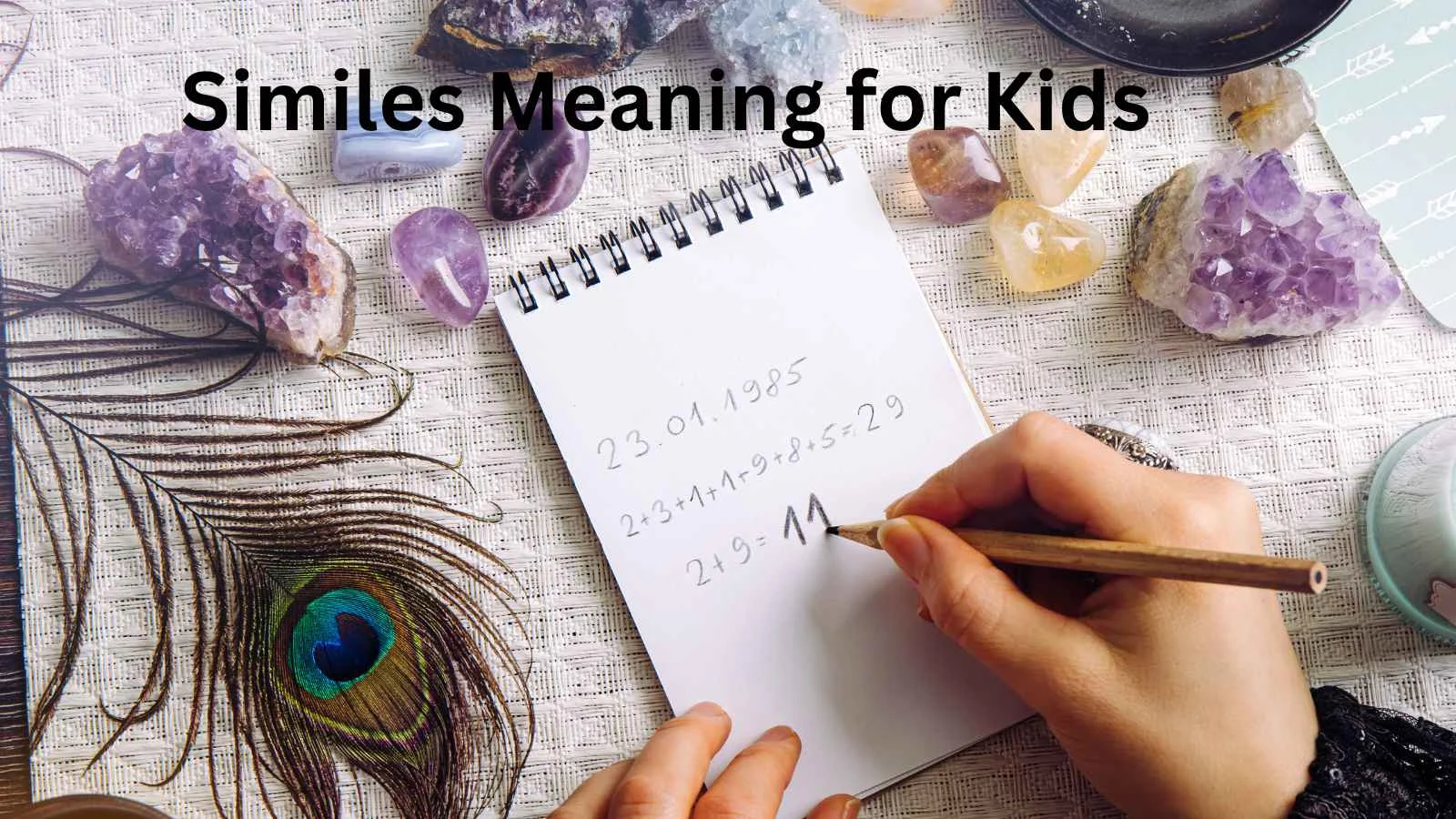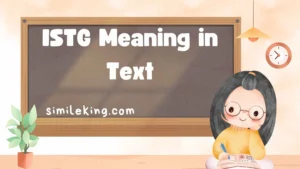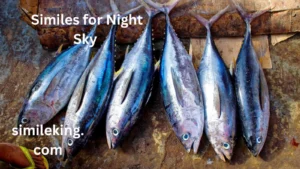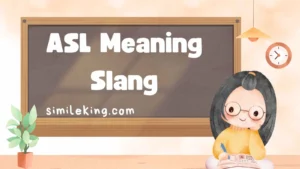Understanding language is like unlocking a magical door—it allows us to communicate, express emotions, and share ideas creatively.
Among the many fun and engaging tools in English, similes play a powerful role.
For children, especially those just beginning their journey with words, learning similes is an exciting step that adds color and imagination to their speech and writing.
This article will explore over 20 simple similes, break down the meaning of similes for kids, and provide polite, professional, and casual alternatives to the phrase “similes meaning for kids” to help diversify your language across different settings.
We’ll also give you 10 user-friendly texting examples, tone-specific guidance, and a helpful conclusion and meta description for context.
What Is a Simile?
A simile is a type of comparison that uses the words “like” or “as” to highlight similarities between two different things. It helps kids relate abstract concepts to things they already understand.
Simple Definition for Kids:
A simile is a way to say that something is like something else.
Why Are Similes Important for Kids?
Similes make descriptions fun, help children understand new ideas, and boost creative writing. They are building blocks for storytelling, poems, and even casual conversations.
Examples of Real-World Use:
- Writing: “Her smile was as bright as the sun.”
- Talking: “I ran like the wind to catch the bus.”
20+ Easy and Fun Similes for Kids
Each of these similes is tailored to children’s understanding and comes with an explanation and a context example.
1. As quiet as a mouse
Meaning: Very quiet
Example: “She was as quiet as a mouse during story time.”
2. As brave as a lion
Meaning: Very brave
Example: “He was as brave as a lion when he got his shot.”
3. As light as a feather
Meaning: Very light
Example: “This balloon is as light as a feather.”
4. As slow as a turtle
Meaning: Very slow
Example: “He walks as slow as a turtle when he’s tired.”
5. As fast as lightning
Meaning: Very fast
Example: “She ran as fast as lightning to the playground.”
6. As happy as a clam
Meaning: Very happy
Example: “He’s as happy as a clam when he’s with his dog.”
7. As busy as a bee
Meaning: Very busy
Example: “Mom is as busy as a bee getting dinner ready.”
8. As red as a tomato
Meaning: Very red
Example: “His face turned as red as a tomato!”
9. As white as snow
Meaning: Very white or pale
Example: “The paper was as white as snow.”
10. As cold as ice
Meaning: Very cold
Example: “The lemonade was as cold as ice.”
11. As gentle as a lamb
Meaning: Very gentle
Example: “She’s as gentle as a lamb with her baby brother.”
12. As silly as a goose
Meaning: Very silly
Example: “He was as silly as a goose making everyone laugh.”
13. As smart as a fox
Meaning: Very smart or clever
Example: “She’s as smart as a fox in math class.”
14. As tall as a giraffe
Meaning: Very tall
Example: “He’s as tall as a giraffe now!”
15. As hungry as a bear
Meaning: Very hungry
Example: “After school, I’m as hungry as a bear.”
16. As soft as a cloud
Meaning: Very soft
Example: “Her blanket is as soft as a cloud.”
17. As strong as an ox
Meaning: Very strong
Example: “Dad is as strong as an ox when lifting boxes.”
18. As sweet as sugar
Meaning: Very sweet (personality or taste)
Example: “She’s as sweet as sugar to her friends.”
19. As black as night
Meaning: Very dark
Example: “His shoes were as black as night.”
20. As smooth as silk
Meaning: Very smooth
Example: “The fabric is as smooth as silk.”
21. As clear as glass
Meaning: Very clear
Example: “The lake was as clear as glass.”
Alternatives to the Phrase “Similes Meaning for Kids”
To avoid repetition and support Google AdSense optimization, here are contextual and tone-based alternatives to the phrase “similes meaning for kids”:
Polite Alternatives
- “Understanding similes in child-friendly language”
- “Meaning of similes explained for young learners”
- “Introducing similes to children gently”
Professional Alternatives
- “Educational breakdown of similes for elementary students”
- “Child-focused guide to simile usage”
- “Structured definitions of similes for learners”
Casual Alternatives
- “What similes mean (the kid version!)”
- “Similes made simple for little ones”
- “Easy simile meanings for kids to get”
Tone Nuances: How to Choose the Right Alternative
| Context | Tone | Best Phrase |
| Teaching a class | Professional | “Educational breakdown of similes for elementary students” |
| Writing a blog | Polite | “Understanding similes in child-friendly language” |
| Casual parenting blog | Casual | “Similes made simple for little ones” |
| Storytime session | Polite/Casual | “What similes mean (the kid version!)” |
| School newsletter | Professional/Polite | “Meaning of similes explained for young learners” |
10 Texting Examples Using Similes (User-Friendly)
These are simple and engaging texting examples that incorporate similes and are optimized for readability:
- Just finished my homework—felt like I was as fast as lightning! ⚡
- This pillow is as soft as a cloud ☁️. I love it!
- After P.E., I’m as hungry as a bear 🐻.
- My little sis is as cute as a button! 💕
- He was as quiet as a mouse during the movie 🍿.
- Today was hot! I melted like ice cream! 🍦
- She’s as bright as the sun in class 🌞.
- I was as cold as ice this morning 🥶!
- His joke was as silly as a goose 😂.
- Felt as strong as an ox after lifting that bag 💪.
Each message reflects friendly tone, natural simile usage, and emojis to boost engagement (great for social/blog copy and Google-friendly content).
How to Teach Similes to Kids Effectively
Here’s a mini guide for teachers and parents:
- Use relatable items: Things kids know—like animals, food, and toys.
- Draw comparisons: “What’s soft like your teddy bear?”
- Use visuals: Similes come alive with pictures.
- Create simile poems: Let kids make up their own.
- Games & stories: Try “Simile Hunt” or “Finish the Simile.”
Common Mistakes to Avoid
- Overcomplicating the language: Stick to kid-friendly comparisons.
- Using unfamiliar concepts: Avoid comparisons kids don’t understand (e.g., “as graceful as a swan” if they’ve never seen one).
- Not explaining why: Always explain why the two things are alike.
Conclusion
Similes are like secret keys that unlock the world of imagination for kids. They help young learners understand, express, and enjoy language in a creative way. By offering a wide range of examples, explaining tone-based alternatives, and giving real-world texting use, we make similes easy and fun to learn. Whether you’re a parent, teacher, or blogger, understanding the meaning of similes for kids and how to talk about them effectively enhances your communication and helps children thrive in language learning.





